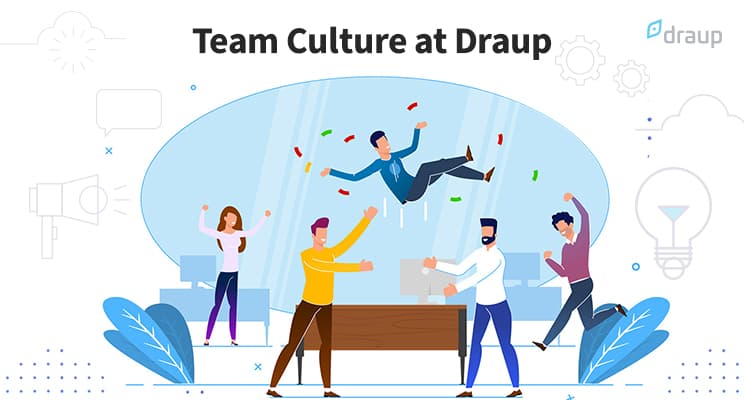The past few years have seen companies experimenting with different work policies. As post-pandemic challenges continue to emerge, workforce planners are now forced to revisit their workplace strategies.
The nature of the workplace is changing entirely as we enter another crisis-laden year and will bear little resemblance to work as it did in the previous year. And as companies plan for the future of work, business leaders must explore the underlying trends that will shape the nature of the workplace in 2022 & beyond.
This article explores a few of those practices redefining the modern workplace and how talent management teams can help their organizaitons prepare for it.
Hybrid Workforce Model: Embracing the new workplace
Despite a breakthrough in the vaccine, people are still hesitant to share space with others. According to a BBC report, 55% of US employees want home and office work blend. And given the numerous lockdowns and quarantine protocols brought by the pandemic, this required shift to work-from-home, and the hybrid landscape is unlikely to see its end.
While companies are reimagining work, talent acquisition and workplace planning teams have a once-in-a-generation chance to reimagine work. However, with the adoption of modern solutions like robust time management systems, and various communication channels, companies seem to have solved this post-crisis problem.
While this trend of the hybrid workplace is growing steadfastly, its future in 2022 & beyond is mesmerizing to behold. Enterprises have utilized the right resources to support this new working environment. Following is how they are streamlining the transition to a hybrid workplace:
- Innovative technologies for secure and collaborative work: The pandemic disrupted the entire employee-employer engagement cycle. However, talent management teams are closing this crisis-induced communication gap with various communication channels. Zoom and Microsoft Teams are a few platforms that have made it easier for workforce planners to support employees across departments to communicate harmoniously in these pressing times. Investing in AI-powered workforce planning has become organizations’ go-to option, as it ensures seamless communication and collaboration backed by a data-driven approach.
- Redefining the HR and talent process: The Great Resignation uprooted the livelihoods of a vast majority, forcing many out of their well-settled jobs. Talent management teams are made to revisit their recruiting practices and take an out-of-the-box approach to find potential candidates. AI-powered talent intelligence tools are helping talent managers make amends to their traditional in-person hiring practices with innovative solutions that quickly help identify profiles equipped with adjacent skills to bypass talent shortage.
Although the traditional workplace shouldn’t be entirely phased out, reimagining the future of workplaces with a concrete hybrid workforce model is the best foot forward as we step out of another crisis-ridden year. Talent managers paying heed to these evolving world changes can only strengthen their workforce and ensure they stay ahead of the curve.
Emphasizing on employee work-life balance
The pandemic ignited the much-needed conversation around employees’ well-being and mental health. With flexibility and work-from-home culture, the pandemic also brought economic and mental stress to employees.
While the pandemic continues to drag on, employers are finding new ways to support their workforce in finding the perfect balance to their work-life culture. Here are a few of the most notable ways that are in practice and will continue to gain traction as we advance:
- Introduction of flexible work hours: Flexible work schedules have come as a boon to many working in the service industry. Flexibility as a working model can alleviate several modern workspace problems and bring in benefits like an increase in employer value proposition and improved retention.
- Focus on the output and not hours worked: The pressing issue of employee well-being has been mainly centered around the number of working hours individuals put in rather than the productivity efforts. By acknowledging based on their results, employees are allowed to have a work-life balance, which ultimately drives best results for the team and, subsequently, the company.
The modern workforce is seeking a better work-life balance now more than ever. Companies that support them in striking a healthy balance between personal and professional life can win the talent war in the post-Covid 19 era.
Reskilling will be taking center stage
Emerging technologies are transforming industries, making organizations invest in people with specialized skills. Reskilling ensures employees have the skills to thrive and make transitions to futuristic roles more plain sailing.
And as limited resources and talent continue stumbling the recovery of companies across industries, talent managers are adapting the upskilling and reskilling process to nurture top talent and maintain high-performance teams. The current work-from-home setup has also made it easier for talent management teams to support their employees in building skills around in-demand technologies.
Enterprises can leverage data-backed solutions to address skill shortages with personalized learning pathways. With AI-powered talent intelligence tools such as Draup, talent management teams have demystified the process of harnessing their existing talent pool and making them future-ready.
To help enterprises cope with mass exodus and build a workforce for tomorrow, Draup supports their talent management teams in evaluating hiring trends, mapping micro and macro paths, identifying & bridging skill gaps.







